
Sensationalistic headlines about North Korean engagement in Kursk contradicted by statements of Secretary of Defense
On November 24, Newsweek ran a story by Ellie Cook with the headline “Russian and North Korean Troops Shrink Ukraine’s Gains in Kursk.”
The title made it seem like North Korea was fighting on the front-lines with the Russians to push back the Ukrainian offensive in Kursk.
However, the opening of the article stated: “Moscow is taking territory back from Ukrainian forces in Russia’s western Kursk region, according to new assessments, as the U.S. says it expects North Korean reinforcements to head for front-line clashes soon.”
Further down in the piece, Secretary of Defense Lloyd Austin is quoted as stating that he “expected to see North Korean soldiers engaged in combat soon.”
Meaning that they were not yet in combat, so Newsweek’s title was misleading.
Cook went on to write that “the State Department confirmed in mid-November that North Korean soldiers were ‘engaging in combat operations with Russian forces’ after undergoing training in how to use drones, artillery, and carry out ‘basic infantry operations.'”
These latter statements contradict what Austin said and what Cook reported on at the beginning of her article.
The contradictory statements and record of deceit of the U.S. State Department make one question what the real story is with North Korea.

Both the Ukrainian and South Korean regimes are vocal and very active in spreading this story about North Korean troop involvement in Russia along with the mainstream media, claiming that the North Koreans were wearing Russian military uniforms as a disguise.
On November 8, CNN reported that Ukrainian President Volodymyr Zelensky said that North Korean troops deployed to Russia’s Kursk region “have fought Kyiv’s forces on the battlefield”—a statement contradicted by Lloyd Austin’s claims two weeks later that thy were “expected to be in combat soon.”
One is further suspicious because a precise troop total has not been agreed upon by the different parties playing up North Korea’s presence in Russia: Some reports have claimed “1,500 troops,” “3,000 troops,” “10,000 troops” and others “12,000 troops.”

Lloyd Austin claimed in October that the U.S. is “seeing evidence that there are North Korean troops that have gone to Russia,” although he did not say what the evidence was.
Other NATO states chimed in with the U.S. assertion: For example, British Defense Secretary John Healey claimed: “It is very likely that the current movement of hundreds of combat troops from North Korea to Russia has begun …It is shocking that North Korean soldiers support Russia’s war of aggression against European soil.” But Healey did not offer any hard evidence that DPRK troops were in Russia.
British Foreign Secretary David Lammy went even further and issued a joint statement with South Korean leaders condemning the DPRK for its alleged troop presence in Russia. The German government even summoned the DPRK Ambassador in Germany to the German Foreign Ministry.
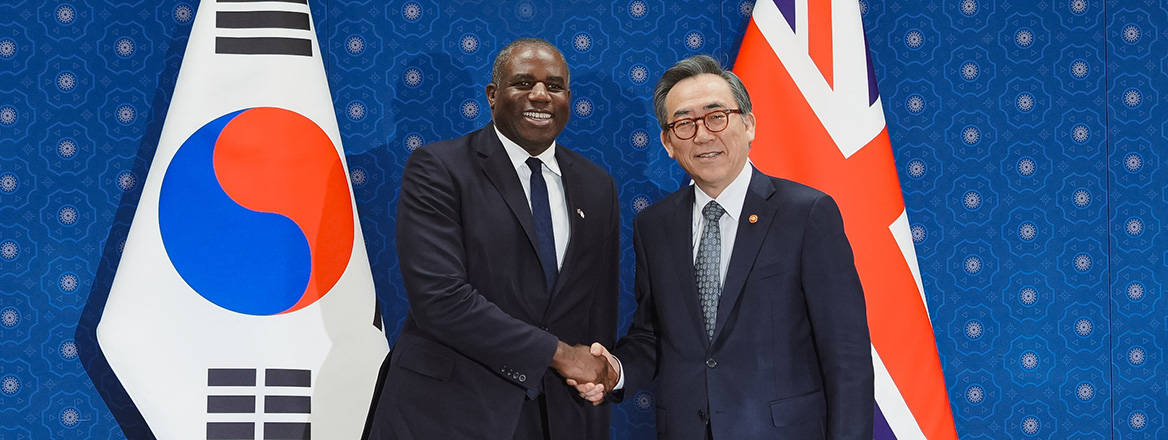
On October 28, Secretary General of NATO (North Atlantic Treaty Organization) Mark Rutte said that “the deployment of North Korean troops represents: One, a significant escalation in the DPRK’s ongoing involvement in Russia’s illegal war. Two, yet another breach of UN Security Council resolutions. And three, a dangerous expansion of Russia’s war.”
The claims of a large-scale DPRK military presence are being used to both escalate the Russia-Ukraine war and increase sanctions against both countries. NATO is talking about unspecified actions against the DPRK but it is not clear what these would be. One can speculate that it would probably be the breaking of diplomatic relations between some NATO states and the DPRK.
So what is the truth about these allegations, which could pave the way for a third world war? Has the DPRK really dispatched an unprecedented number of military personnel to fight alongside Russian forces? The answer in my assessment is “no.”
On October 21, the DPRK representative at the UN said: “As for the so-called military cooperation with Russia, my delegation does not feel any need for comment on such groundless stereotyped rumors.” Earlier, on October 10, Russian government spokesman Dmitry Peskov stated that “this looks like another hoax” when asked about DPRK troops in Russia. On October 25, the DPRK vice foreign minister described the stories as a “rumor” and refused to confirm them.
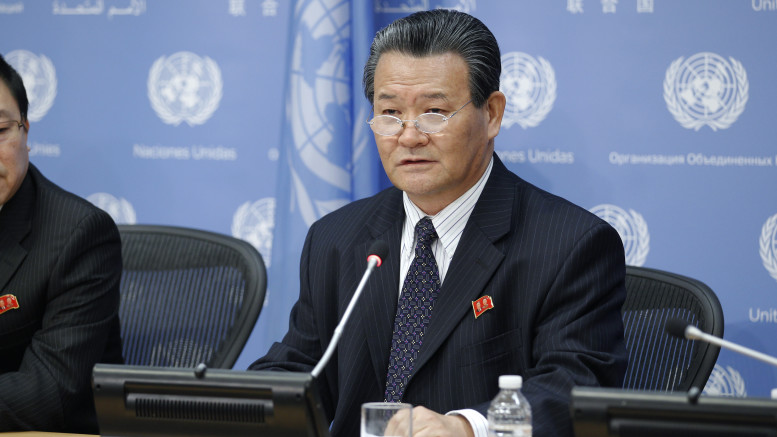
In fact, there has been no official announcement from the DPRK Ministry of National Defense as to the dispatch of KPA troops to Russia. In the past, when the DPRK sent forces to fight in the Vietnam War it was publicly announced by the DPRK, with President Kim Il Sung at a conference of the ruling Workers’ Party of Korea calling for volunteers to go to Vietnam.
With regard to Russia, the evidence offered so far has been patchy.
First, there was the standard blurry satellite picture from the CIA disinformation outfit NKNews based in Seoul supposedly showing DPRK ships leaving Chongjin Harbor for Russia.
Now, assuming the picture is real, there was no evidence that the ships actually were transporting troops, it could have been coal, for example. Why use ships anyway, wouldn’t it make more sense to send them by rail or by air which would be quicker?

Also, a video was circulated supposedly showing DPRK troops arriving in Russia, but the uniforms are not the uniforms of the Korean People’s Army. The troops could have been Laotian or Mongolian troops on joint exercises with the Russian Federation or ethnic Koreans living in Russia.
Another picture that was circulated by Ukrainian sources showed an apparently dead DPRK soldier (assumed to have been killed in action) with what was supposed to be an identity card of the Korean People’s Army.
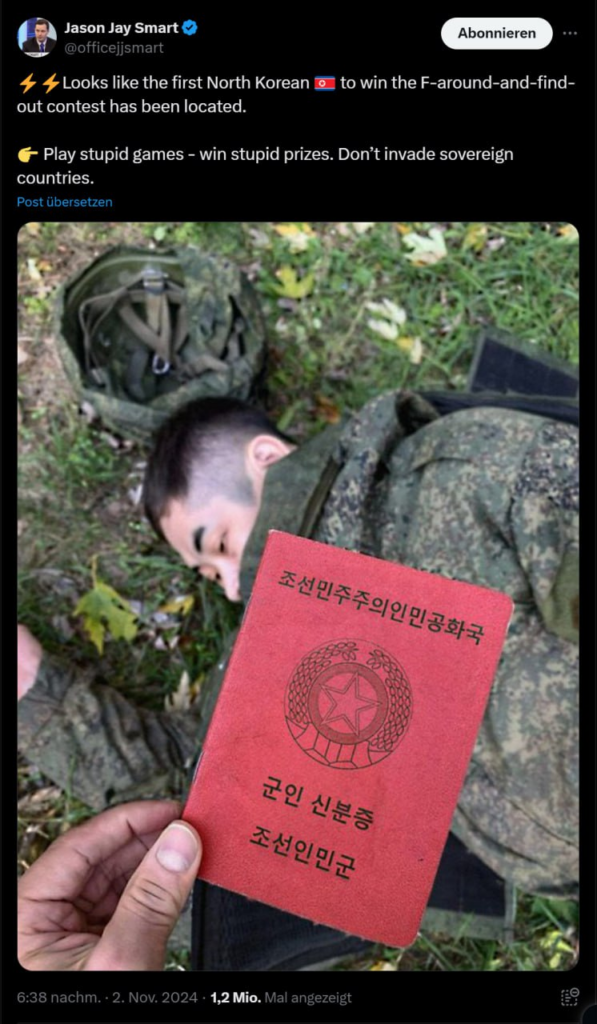

However, a number of things stand out about this so-called “evidence.” First, it looks like its photoshopped or could easily have been.
Second, the “dead soldier has no signs of injuries or wounds, there is no discoloration of the skin, raising questions if he is really dead and if the photo has been possibly staged.
Third, there is the question of the “KPA Identity card.” Would troops on an apparently covert or “unconfirmed mission” walk around with identity cards?
Does the KPA actually issue identity cards to its soldiers? If so, would they be made of colored card? The Korean characters on the “identity card” were later shown to be using a “Malgun Gothic” font, developed by the South Korean company Sandoll Communications.
The DPRK has never deployed 10,000 troops outside the country at any point in its history. A small number of KPA troops and air force pilots were deployed to Vietnam during the war against the U.S.
Similarly, KPA Air Force pilots fought in Egypt and Syria in 1973 but the numbers were small. The DPRK also deployed a small number of trainers or specialists in about a dozen countries, mostly in Africa, in the past but there was no way that this figure reached 10,000.

The DPRK is very unlikely to send troops abroad at this time when it is facing threats from the U.S. and South Korea. Some 30,000 U.S. troops are deployed in South Korea and large numbers of U.S. troops are in Okinawa, Guam and the Philippines.
Additionally, the U.S. is openly deploying nuclear submarines and nuclear bombers to South Korea. During the past year, the U.S. and South Korea have carried out numerous military exercises simulating a war with the DPRK.

Thus, the situation on the Korean peninsula is very tense so that the DPRK leadership is very unlikely to send a large number of troops abroad.
All the attention placed on North Korea obscures the fact that it is South Korea that has troops and mercenaries in Ukraine and is supplying weapons and giving aid to the Kyiv regime. South Korean aid to Ukraine amounted to $150 million in 2023. South Korea has also supplied arms to Poland to replace the weapons that Poland has sent to Ukraine.
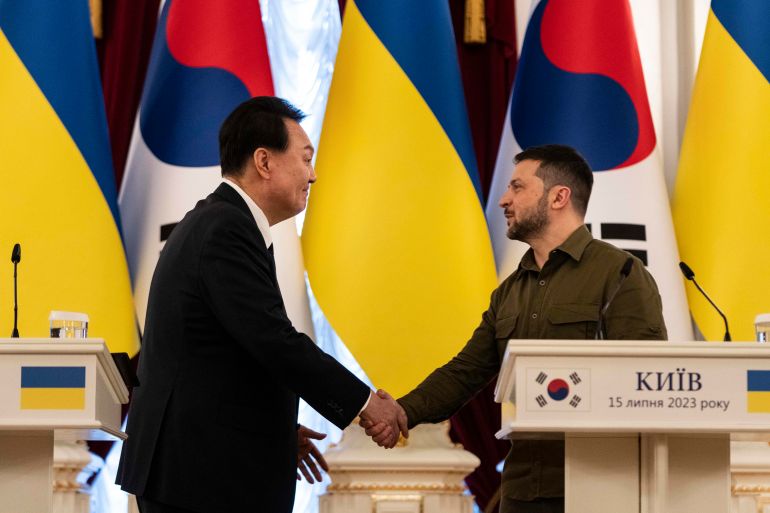
South Korea and Ukraine are very much birds of feather; both are heavily dependant on U.S. military support, advance neoliberal economic policies and are rabidly anti-communist.
They each have banned communist parties and jailed communists (and, in the case of South Korea, actually executed communists).
Both are used by the U.S. empire as proxies for aggression against adversaries of the U.S.
The present Ukrainian leader Zelensky, a former comedian, is said to have included anti-DPRK material in some of his routines.
The Kyiv regime broke diplomatic relations with the DPRK in July 2022 over the latter’s recognition of the Donetsk and Luhansk People’s Republics. Even before that—in 2004—Ukraine downgraded its relations with the DPRK when it closed its embassy.
Kim Yo Jong, Vice Department Director of the Central Committee of the Workers’ Party of Korea and Kim Jong-Un’s sister, commented on October 22 as follows about South Korea and Ukraine: “Seoul and Kyiv are exact counterparts in going about begging and letting loose reckless remarks against nuclear weapons states at random without follow-up capability…It seems to be a common feature of bad dogs bred by the U.S.”

This is a very apt description of both the Seoul and Kyiv regimes.
At the end of the day the reports alleging North Korean troops fighting for Russia has little real evidence to back them up.
It might be true, but they are just based on speculation and conjecture, with contradictory statements by different government officials.
Furthermore, no context is given as to why North Korea might want to support Russia in light of the pattern of aggression directed against it and historic North-Korean Soviet ties in the Cold War, which helped North Korea’s government to survive in that period.
With the U.S. media adopting yellow journalism standards reminiscent of the Spanish-American War, the stories about North Korean troops and Russia are being used to demonize both Russia and the DPRK and further escalate the Russia-Ukraine conflict as the Biden administration sends long-range missiles to Ukraine to strike deep into Russia.
The DPRK is being blamed for the continuation of the conflict, which is setting the groundwork for potentially aggressive action by the U.S. and South Korea against it.
War was waged against Iraq on the premise that Iraq had weapons of mass destruction. Supposedly comprehensive evidence was presented at the UN but, after Iraq was invaded, the U.S. and its allies could not find anything that proved the existence of these “weapons of mass destruction.”
The allegations of DPRK involvement in the Russia-Ukraine conflict have a similar smell to them. Maybe history is repeating itself.

CovertAction Magazine is made possible by subscriptions, orders and donations from readers like you.
Blow the Whistle on U.S. Imperialism
Click the whistle and donate
When you donate to CovertAction Magazine, you are supporting investigative journalism. Your contributions go directly to supporting the development, production, editing, and dissemination of the Magazine.
CovertAction Magazine does not receive corporate or government sponsorship. Yet, we hold a steadfast commitment to providing compensation for writers, editorial and technical support. Your support helps facilitate this compensation as well as increase the caliber of this work.
Please make a donation by clicking on the donate logo above and enter the amount and your credit or debit card information.
CovertAction Institute, Inc. (CAI) is a 501(c)(3) non-profit organization and your gift is tax-deductible for federal income purposes. CAI’s tax-exempt ID number is 87-2461683.
We sincerely thank you for your support.
Disclaimer: The contents of this article are the sole responsibility of the author(s). CovertAction Institute, Inc. (CAI), including its Board of Directors (BD), Editorial Board (EB), Advisory Board (AB), staff, volunteers and its projects (including CovertAction Magazine) are not responsible for any inaccurate or incorrect statement in this article. This article also does not necessarily represent the views the BD, the EB, the AB, staff, volunteers, or any members of its projects.
Differing viewpoints: CAM publishes articles with differing viewpoints in an effort to nurture vibrant debate and thoughtful critical analysis. Feel free to comment on the articles in the comment section and/or send your letters to the Editors, which we will publish in the Letters column.
Copyrighted Material: This web site may contain copyrighted material the use of which has not always been specifically authorized by the copyright owner. As a not-for-profit charitable organization incorporated in the State of New York, we are making such material available in an effort to advance the understanding of humanity’s problems and hopefully to help find solutions for those problems. We believe this constitutes a ‘fair use’ of any such copyrighted material as provided for in section 107 of the US Copyright Law. You can read more about ‘fair use’ and US Copyright Law at the Legal Information Institute of Cornell Law School.
Republishing: CovertAction Magazine (CAM) grants permission to cross-post CAM articles on not-for-profit community internet sites as long as the source is acknowledged together with a hyperlink to the original CovertAction Magazine article. Also, kindly let us know at info@CovertActionMagazine.com. For publication of CAM articles in print or other forms including commercial internet sites, contact: info@CovertActionMagazine.com.
By using this site, you agree to these terms above.
About the Author

Dermot Hudson was born in London, UK but grew up in Winchester.
He studied History at the University of Winchester and also did some postgraduate study at the University of Greenwich. He has visited the Democratic People’s Republic of Korea 18 times and is the Chairman of the Korean Friendship Association of the UK as well the founder of the British Group for the Study of the Juche Idea.
In 2016 Dermot Hudson was awarded the Doctorate of Socio-politics by the Korean Association of Social Scientists.
He can be reached at juche007@yahoo.co.uk.


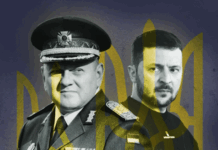








I will immediately snatch your rss as I can not to find your email subscription link or e-newsletter service. Do you have any? Kindly allow me realize in order that I may just subscribe. Thanks.
It’s amusing that for months, there has been a complete lack of evidence—no captured North Koreans, no bodies taken by the Ukrainians, not even a single photo or video, despite satellites and drones constantly monitoring the battlefield. Yet, the narrative persists, with discussions and writings about North Korean soldiers in Kursk happening non-stop as if they were actually present.
WITHOUT A DOUBT, IT’S THE LEADING CONSPIRACY THEORY OF 2024!
A recent BBC report states: “Despite weeks of reports suggesting that as many as 10.000 North Korean troops have been sent to Kursk to join the Russian counteroffensive the soldiers we have been in contact with have yet to encounter them.” BBC quotes one soldier: “I have not seen or heard anything about Koreans alive or dead,” and the sarcastic comment of another Ukrainian soldier: “It is very difficult to find a Korean in the dark Kursk forest especially if he is not there.”
France 24 recently reviewed all the photos and videos allegedly showing North Korean soldiers in Russia. They thought they had seen some North Korean soldiers on footage in the Far East. All pictures and videos allegedly showing North Korean soldiers in Kursk did not show North Korean soldiers or were faked, according to France24.
Most of the News Reports about North Korean Troops helping Russia has come from little known News Outlets such as Oracle Eyes, Kanal 13, The Military Show, Anka Daily News, PPR Global, Radio Free Asia, PDS News Clips, Arrang News, Chanel 4 News etc. But the major well known news outlets have not reported very much about this.
So I am still investigating this development and have not reached any conclusions. I will let you know if I have new information.
The Ukraine was involved in the invasion of Iraq.